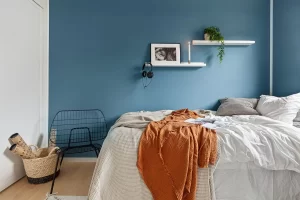Lofty Ambitions: Loft-Style Inspirations for HDB Living

The appeal of loft-style living, with its industrial flair, open floor plans, and soaring ceilings, has captured residents all over the world. While traditional lofts are generally housed in converted warehouses or industrial areas, the essence of loft living may be brought into more conventional settings, such as Housing and Development Board (HDB) apartments. In this piece, we look at loft-style ideas customised for Singapore’s HDB interior design, demonstrating how people may attain the edgy sophistication of loft living within the limits of their small apartments.
Embracing Open Concept Living
Open and linked rooms are key to loft-style living. To reproduce this atmosphere in HDB homes, interior designers frequently recommend tearing down unneeded partitions. Residents can gain a sense of spatial freedom and connectedness by removing visible boundaries, resulting in a seamless integration of the living, dining, and kitchen rooms.
When total openness is not feasible, inventive room dividers might give a solution. Glass dividers, sliding doors or even strategically placed shelving units may delineate separate zones within the loft-style HDB, creating a sense of openness while still fulfilling useful reasons.
Industrial Aesthetics
Loft-style rooms are distinguished by their industrial appearance, which frequently includes exposed brick walls and raw concrete finishes. In HDB living, interior designers imitate this industrial chic by using imitation brick wall treatments, concrete-effect wallpapers, or even genuine exposed brick if technically possible. These items bring texture and originality to the area.
Metallic highlights and structural features complement the industrial look. Interior designers can use metal-framed furniture, pendant lighting with exposed bulbs, and industrial-style shelving systems. These modifications not only enhance the loft-style aesthetic but also give an edge of edgy elegance to HDB interiors.
Maximising Vertical Space
Loft living is synonymous with maximising vertical space, and HDB interiors may profit from this strategy. Mezzanine floors or loft beds are popular additions that maximise available square space. These raised platforms may be used as sleeping quarters, home offices, or additional living rooms, allowing tenants to maximise the use of their HDB apartments.
While standard HDB apartments do not have soaring ceilings, interior designers may create the appearance of height by using design elements that lead the eye higher. Vertical lines, cleverly placed mirrors, and towering furnishings may give the illusion of double-height ceilings, encapsulating the loft-style essence within the confines of conventional HDB construction.
Industrial Light Fixtures
Industrial lighting fixtures are a common feature of loft-style living. Interior designers frequently advocate boldly designed pendant lights with exposed bulbs for HDB interiors. These lights not only provide illumination but also act as artistic features, adding to the overall loft aesthetic.
Edison bulbs and wire-accented lighting fixtures are frequently used to add to the industrial chic aesthetic. These vintage-inspired lights and exposed wiring evoke nostalgia, recalling the roots of loft living in repurposed industrial areas.
Flexible Furniture Arrangements
Loft-style living promotes flexibility, which may be applied to HDB interiors by including modular and multi-functional furniture. Interior designers propose items that can be adjusted to accommodate various tasks, such as sectional couches with movable components or coffee tables that serve as workstations.
Concealed storage solutions are essential for maintaining a clean, uncluttered appearance. Interior designers may recommend built-in storage units, concealed cabinets, or furniture with inbuilt storage compartments. This guarantees that the loft-type HDB is versatile and adaptive while maintaining flair.
Conclusion
Transforming an HDB apartment into a loft-style refuge necessitates a unique combination of open concepts, industrial aesthetics, vertical optimisation, distinctive lighting, and flexible furniture combinations. By combining these loft-style influences, residents may give their HDB living spaces the edgy elegance and spatial freedom of loft living, resulting in a sophisticated urban escape within the limits of conventional housing.


